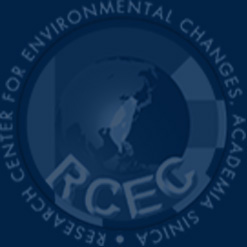

研究興趣
我的研究興趣主要為探討空氣污染在大範圍的濃度變化,透過蒐集空污監測資料、衛星影像、土地利用/土地覆蓋資訊,並結合地理資訊系統、大數據分析與機器學習演算法,建立地理人工智慧 (Geospatial-Artificial Intelligence, Geo-AI) 模型,以推估空氣污染濃度時空變化,目前已探討的標的污染物包含PM2.5、NO2、CO等。此外,我透過實場採樣的方式,透過衝擊式空氣採樣器採集台南市室外真菌孢子樣本,透過顯微鏡計數總真菌孢子,估算台南地區空氣中真菌孢子濃度,並透過建立真菌孢子之Geo-AI模型,推估台南室外真菌孢子濃度空間分布。後續更進一步利用模擬之空污與生物氣膠濃度,探討環境健康效應,除此之外更透過分析氣喘兒童的基因多型性,了解PM2.5、真菌孢子、SNP對於兒童氣喘的影響。
代表著作
Wong, P. Y., C. Y. Hsu, J. Y. Wu, T. A. Teo, J. W. Huang, H. R. Guo, H. J. Su, C. D. Wu, John D. Spengler. 2021. Incorporating Land-Use Regression into Machine Learning Algorithms in Estimating the Spatial-Temporal Variation of Carbon Monoxide in Taiwan. Environmental Modelling & Software (SCI, IF=5.471, Water Resources, Rank 16/100, Q1, JIF Percentile 84.50%)
Wong, P. Y., H. Y. Lee, Y. T. Zeng, Y. R. Chern, N. T. Chen, S. C. C. Lung, H. J. Su, C. D. Wu. 2021. Using a Land Use Regression Model with Machine Learning to Estimate Ground Level PM2.5. Environmental Pollution (SCI, IF=9.988, Environmental Sciences, Rank 28/279, Q1, JIF Percentile 90.14%)
Wong, P. Y., H. J. Su, H. Y. Lee, Y. C. Chen., Y. P. Hsiao, J. W. Huang, T. A. Teo, C. D. Wu, John D. Spengler. 2021. Using land-use machine learning models to estimate daily NO2 concentration variations in Taiwan. Journal of Cleaner Production (SCI, IF=11.072, Environmental Sciences, Rank 24/279, Q1, JIF Percentile 91.58%)
Wong, P. Y., H. Y. Lee, L. J. Chen, Y. C. Chen, N. T. Chen, S. C. C. Lung, H. J. Su, C. D. Wu, Jose Guillermo Cedeno Laurent, Gary Adamkiewicz, John D.Spengler. 2022. An alternative approach for estimating large-area indoor PM2.5 concentration – A case study of schools. Building and Environment (SCI, IF=7.093, Engineering, Civil, Rank 10/138, Q1, JIF Percentile 93.12%)
Wong, P. Y., H. J. Su, S. C. C. Lung, C. D. Wu. 2023. An ensemble mixed spatial model in estimating long-term and diurnal variations of PM2.5 in Taiwan. Science of The Total Environment (SCI, IF=10.754, Environmental Sciences, Rank 26/279, Q1, JIF Percentile 90.86)
Wong, P. Y., H. J. Su, S.C.C. Lung, W.Y. Liu, H.T. Tseng, G. Adamkiewicz, C. D. Wu. 2024. Explainable geospatial-artificial intelligence models for the estimation of PM2.5 concentration variation during commuting rush hours in Taiwan. Environmental Pollution (SCI, IF=7.6, Environmental Sciences, Rank 37/358, Q1, JIF Percentile 89.8%)
Wong, P.Y., H.J. Su, H.J. Chao, W.C. Pan, H.J. Tsai, T.C. Yao, W.Y. Liu, S.C.C. Lung, G. Adamkiewicz, C. D. Wu. 2024. An Innovative Geo-AI Approach in Estimating High-Resolution Urban Ambient Fungal Spore Variations. Earth Systems and Environment (SCI, IF=5.3, Geosciences, Multidisciplinary, Rank 26/254, Q1, JIF Percentile 90.0%)
Wong, P. Y., Zeng, Y. T., Su, H. J., Lung, S. C. C., Chen, Y. C., Chen, P. C., Hsiao, T. C, G. Adamkiewicz, C. D. Wu. 2024. Effects of feature selection methods in estimating SO2 concentration variations using machine learning and stacking ensemble approach. Environmental Technology & Innovation, 103996 (SCI, IF=6.7, Environmental Sciences, Rank 44/385, Q1, JIF Percentile 87.8%)
Babaan, J., F. T. Hsu, P. Y. Wong, P. C. Chen, Y. L. Guo, S. C. C. Lung, Y. C. Chen, C. D. Wu*. 2023. A Geo-AI-based ensemble mixed spatial prediction model with fine spatial-temporal resolution for estimating daytime/nighttime/daily average ozone concentrations variations in Taiwan. Journal of Hazardous Materials (SCI, IF=13.6, Environmental Sciences, Rank 10/274, Q1, JIF Percentile 96.5%)
Hsu, C. Y., T. W. Lin, J. Babaan, A. K. Asri, P. Y. Wong, K. H. Chi, T. H. Ngo, Y. H. Yang, W. C. Pan, C. D. Wu*. 2023. Estimating the daily average concentration variations of PCDD/Fs in Taiwan using a novel Geo-AI based ensemble mixed spatial model. Journal of Hazardous Materials (SCI, IF=13.6, Environmental Sciences, Rank 10/274, Q1, JIF Percentile 96.5%)
研究成果介紹
發展適用於 PM2.5、NO2 、CO和真菌孢子的 Geo-AI 模型,以提升預測準確性與變數解釋能力 透過整合地理資訊系統、遙測技術、土地利用/土地覆蓋數據與機器學習演算法,我開發了 Geo-AI 模型,其預測準確性相比傳統模型方法 (如土地利用回歸模型) 提升了約 20%。例如,Geo-AI 模型對於 PM2.5 的變異解釋能力達到 94%、NO2 為 91%、CO 為 85%,而真菌孢子達到 96%。此外,藉由使用夏普利值 (SHAP value),釐清了各目標空氣污染物的關鍵影響因子。透過提升機器學習模型的可解釋性與預測能力,所估算的空氣污染濃度可進一步應用於環境流行病學研究中,以探討空污之健康影響。
參考資料: Wong et al. 2021a,b,c; Wong et al. 2023; Wong et al. 2024a,b.